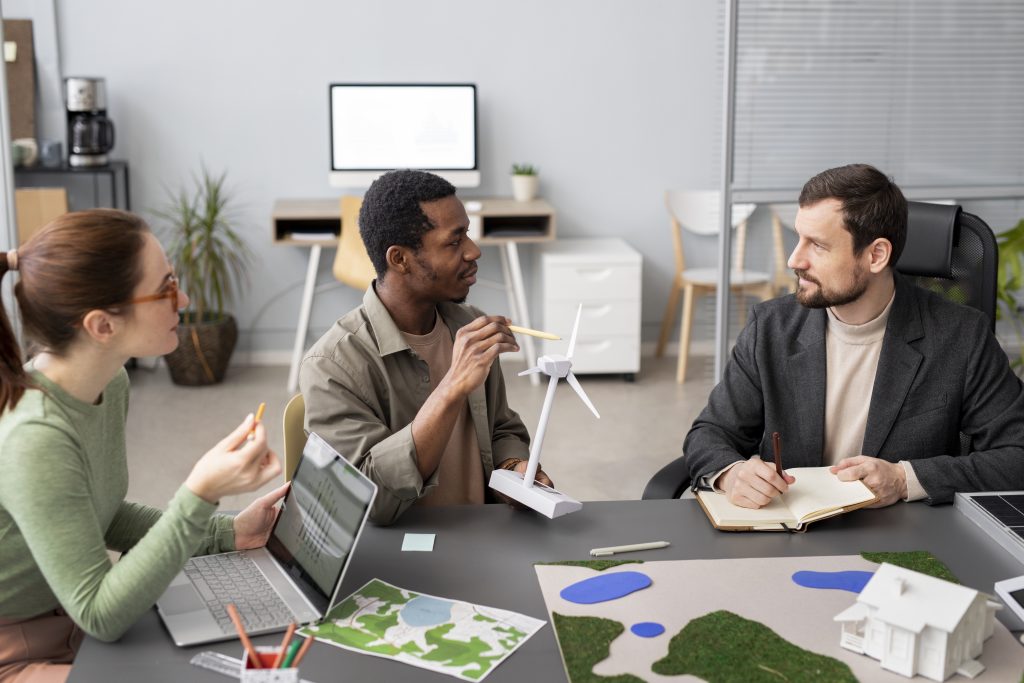Urban areas are expanding rapidly, and with this growth comes the challenge of ensuring that development is sustainable, inclusive, and resilient. Understanding how to plan for sustainable urban development is crucial for city planners, educators, policymakers, and communities aiming to create livable environments for current and future generations.

1. Integrate Education for Sustainable Urban Development
Education is a foundational element in planning sustainable urban development. By incorporating Education for Sustainable Development (ESD) into curricula, individuals are equipped with the knowledge and skills needed to make informed decisions that benefit both society and the environment.
Curriculum Development: Introduce topics such as renewable energy, waste management, and urban resilience into school programs.
Community Workshops: Organize sessions that educate residents about sustainable practices and urban planning processes.
Professional Training: Provide ongoing education for urban planners and developers on sustainable design principles.
UNESCO emphasizes that ESD empowers people to change the way they think and work toward a sustainable future.
2. Foster Community Engagement in Urban Development Planning
Engaging the community in the urban development process ensures that growth meets actual resident needs and promotes a sense of ownership.
Public Forums: Hold regular meetings where community members can voice their opinions and contribute ideas.
Surveys and Feedback Mechanisms: Implement tools to gather input from a broad segment of the population.
Collaborative Decision-Making: Involve local organizations and stakeholders in Urban transformation committees.
Participatory planning methods have been shown to lead to more equitable and effective urban development outcomes.
3. Implement Green Infrastructure Projects
Incorporating green infrastructure is vital for enhancing urban ecosystems and mitigating environmental challenges.
Urban Green Spaces: Develop parks, community gardens, and green roofs to improve air quality and provide recreational areas.
Sustainable Water Management: Use rain gardens and permeable pavements to manage stormwater runoff.
Energy-Efficient Buildings: Design structures that utilize natural lighting and ventilation to reduce energy consumption.
The Hammarby Sjöstad district in Stockholm serves as a model for integrating green infrastructure into urban development planning.
4. Promote Affordable and Inclusive Urban Housing
Ensuring access to affordable housing is a key component of sustainable Urban transformation and equitable growth.
Mixed-Income Developments: Encourage housing projects that cater to various income levels.
Incentivize Developers: Offer benefits for constructing affordable housing units.
Community Land Trusts: Support models that keep housing affordable in the long term.
Odisha’s ‘housing for all’ strategy highlights the importance of integrating affordable housing into broader Metropolitan development frameworks.
5. Use Data and Technology to Enhance Urban Development
Leveraging smart technology can improve the efficiency and precision of urban development strategies.
Geographic Information Systems (GIS): Use GIS for mapping and analyzing spatial data to inform development decisions.
Smart City Technologies: Implement sensors and data analytics to monitor urban systems and optimize resource use.
Digital Platforms: Facilitate communication and engagement with residents through online tools and apps.
The integration of technology supports data-driven, adaptive urban development planning.
6. Climate Change Goals
Urban areas must be designed to withstand and mitigate the effects of climate change through thoughtful urban development strategies.
Climate-Resilient Infrastructure: Build structures that can endure extreme weather events.
Low-Carbon Transportation: Promote public transit, cycling, and walking to reduce emissions.
Urban Heat Island Mitigation: Increase tree canopy and green spaces to lower city temperatures.
Initiatives like the creation of mini-forests in Uttar Pradesh demonstrate how Metropolitan development can contribute to climate resilience.
7. Create Economic Growth
Sustainable Urban transformation should also generate economic opportunities that align with environmental and social goals.
Green Job Training: Provide education and skills development for jobs in renewable energy, sustainable construction, and environmental management.
Support Local Businesses: Foster entrepreneurship that contributes to the local economy and sustainability.
Inclusive Economic Policies: Ensure that urban economic development benefits all segments of the population.
New York’s inclusive green job training programs illustrate how economic planning can be embedded within Metropolitan development.
Conclusion
Understanding how to plan for sustainable urban development requires a multifaceted approach—one that integrates education, community involvement, environmental systems, emerging technologies, and inclusive economics. By applying these strategies, cities can become resilient, equitable, and efficient spaces that meet today’s demands while preserving resources for the future.
Reference
- UNESCO – Education for Sustainable Development (ESD)
Description: Provides guidance on integrating sustainability into education systems worldwide. - Participatory Planning – Wikipedia
Description: Overview of community engagement and participatory planning processes in urban development. - Green Infrastructure – Wikipedia
Description: Details on the benefits and implementation of green infrastructure in urban areas. - Times of India – Odisha’s Housing Strategy
Description: Discusses Odisha’s approach to affordable housing within urban development. - Deloitte Insights – The Future of Cities
Description: Examines the role of technology and smart city solutions in urban planning. - Times of India – Mini Forests for Urban Heat Island Mitigation
Description: Reports on urban forestry efforts to reduce heat effects in Indian cities. - Reuters – New York’s Inclusive Green Job Training
Description: Discusses economic opportunities created by green job training programs.









